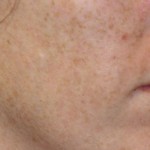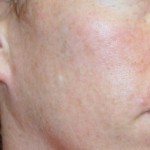Part Two: Q & A with Deborah H. Atkin, MD
When it comes to the world of skin and lasers, it can be very confusing for the patient. There are a plethora of treatment options, both in office and at-home. Patients often come in to consult with us, after they have spend hundreds of dollars on over the counter solutions that have not provided the results they hoped for. Or they have suffered frustration after trusting under-qualified persons to give them expert advise on their skin issues.

For the second part of our three part Q & A series, Deborah H. Atkin, MD, board certified dermatologist is going to provide some sound expert advice to keep you looking your best.
What is the best topical for my melasma?
That is a question with many answers. We can only speak to what we use as treatment of melasma in our Del Mar Dermatology Practice. Our treatment protocol is based on many years of experience in the dermatology field and what I feel are the best physician strength products on the market.
Melasma is difficult to treat. It is chronic, so you can improve or suppress it, but you cannot really cure it. It can be caused by a variety of factors, including hormones, heat, UV rays, genetics, and medications.
With my melasma patients I recommend a strict topical at-home treatment regimen that includes a physician strength sunscreen that provide UVA/UVB and infrared protection, a topical antioxidant and a skin lightening agent such as Topix Rebrightalize pads or SkinMedica Lytera 2.0.
- Before Photofacial
- After Photofacial
In-office treatments such as chemical peels may be recommended. Photofacial (IPL) can also be used, depending on the patients particular skin type, condition and the severity of their melasma.
What SPF should I be using?
I recommend to patients that they use a sunscreen with at least an SPF 40. Equally important to that SPF number is the amount of sunscreen you are using and the frequency of use. I suggest that you reapply your sunscreen every 2-3 hours when outdoors for any activities.
A physical block sunscreen is best, especially in light of the fact that many governments are banning chemical sunscreens. Physical sunscreens contain minerals such as zinc oxide or titanium dioxide which provides a physical, reflective barrier between you and the sun.
What can be done to reduce the size of enlarged pores?
There are a few great treatments that will reduce pore size. Keep in mind that it’s not just reducing the size, it’s keeping them from becoming clogged and enlarging.
We perform in-office treatments such as Smoothbeam laser and Ultherapy Pore Refine that will shrink your pores and give you a more matte finish to your skin. At-home topical retinoids, such as retinol complex may be important to maintain that pore refinement. It is also suggested that you have occasional purifying facials with an experienced medical esthetician to extract any comedones that may be clogging your pores. An esthetician has special, sterile instruments that can do this without causing trauma to the skin.
What is my best defense against wrinkles?
Sun avoidance and sunscreen are the first line of defense. An at-home skin care regimen that includes a retinoid, growth factors, antioxidants and sunscreen is also very important to your skin’s continued good health and outwardly appearance.
- Before Fraxel Laser
- After Fraxel Laser
Botox is a great corrective and preventative strategy for decreasing lines and wrinkles caused by hyperactive facial expressions and neck bands. Fraxel laser is a personal favorite of mine for preventing and correcting lines and wrinkles, as well as reducing your skin cancer risk.
To learn more about the laser skin treatments available at Dermatology & Laser of Del Mar, or to schedule a consultation with Dr. Deborah Atkin, contact us.






